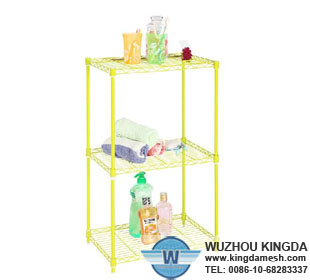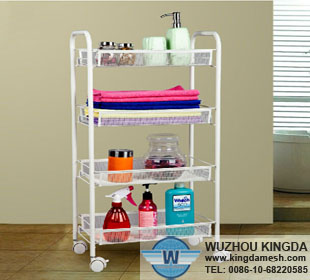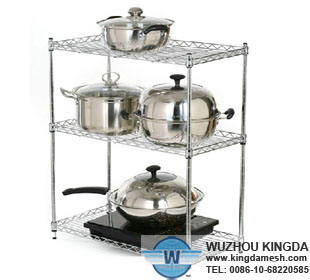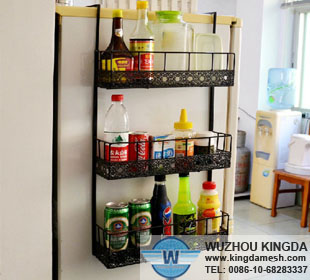Assembly Instructions for Wire Shelving
Wire shelving is a great way to add storage space in your home's pantry or garage. This type of modular shelving comes in a variety of sizes, and you can configure it to fit into almost any space you have available. It's easy to maintain and lasts for years. Because the shelving assembly process is simple, any do-it-yourselfer can quickly add durable wire shelving to his home or garage with a minimal number of tools.
Purchase Wire Shelving
Measure your available space to find a shelving unit that's best for your storage area. Consider any obstructions on the walls or ceilings that would prevent you from setting a shelf in front of or underneath them. Make sure the floor can support the weight of the loaded shelves. Most wire shelving units come with four adjustable shelves. The shelving units come in different lengths as well as different heights. Because of its modular nature, you can build wire shelving to fit any size storage space.
Decide what grade shelving you wish to purchase. An industrial-gauge wire provides greater stability to the shelving. If you are going to be storing heavy items on the wire shelving, buy as heavy gauge as you can afford. This isn't an issue if you plan to store lightweight items on your shelving. To assist you in making your choice, most shelving units indicate how many pounds you can safely store on one shelf.
Select shelving that is stationary or that has wheels. If you plan to move your wire shelving regularly, not only do you need wheels, but you should also consider models with handles to help you move the shelving.
Lay Out Shelving Parts
Unpack the shelving from its packaging. Remove the protective plastic wrapping from the pieces. Make sure all the parts are in the package. Separate the sides, the racks, the connectors, and any optional parts such as wheels and handles. Set the instructions aside so you can follow them for your shelving assembly.
Assemble the Wire Shelving
Attach the casters to the shelving posts. Most casters are spring-loaded. Push them into the bottom of the post until the mechanism snaps into place. You may need to use a rubber mallet to seat the casters completely into the post. If you aren't using casters, attach the self-leveling end caps by tapping them into the ends of the post with a rubber mallet.
Snap a connector onto each post at the level where you want the bottom shelf. Use the markings on the post to make sure all four connectors are level. Slide the bottom shelf into place by inserting the four posts into the holes in the shelving.
Continue with the shelving assembly by adding the remaining three shelves. Space the shelves however you need them to store your items on the shelving unit. Do figure on storing the heavier and taller items on the bottom shelves. Secure the top shelf to complete the shelving assembly. Add handles if they are part of the shelving unit.







